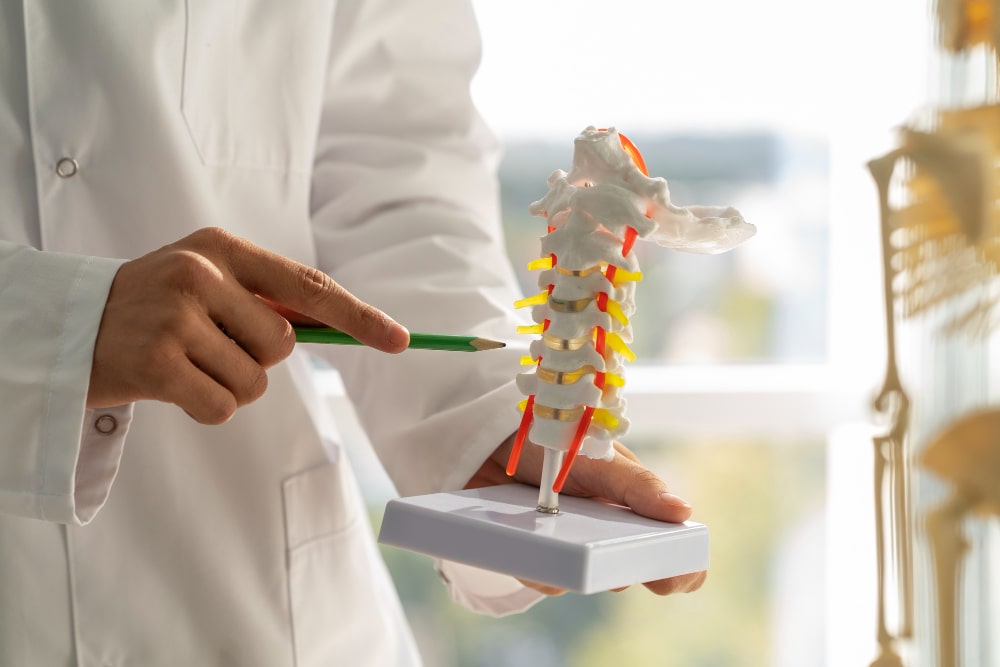Best Orthopedic Doctor in Nalgonda
What is Orthopedics?
Orthopedics, also known as orthopedic surgery, is a medical specialty focused on the diagnosis, treatment, and prevention of conditions and injuries affecting the musculoskeletal system. This system includes bones, joints, muscles, ligaments, tendons, and nerves that provide support, stability, and movement to the body. VenuVidya Multispecility Hospital Having Best Orthopedic Doctor in Nalgonda

Best Orthopedic Surgeons in Nalgonda are medical doctors who specialize in orthopedics. They undergo extensive training and possess expertise in the surgical and non-surgical management of musculoskeletal conditions. Some orthopedic surgeons may further specialize in specific areas such as sports medicine, joint replacement, spine surgery, hand surgery, or pediatric orthopedics.
Orthopedic conditions and injuries can range from acute fractures and sports injuries to chronic conditions like arthritis or degenerative disc disease. Some common conditions and treatments in orthopedics include:
- Fracture Management: Orthopedic surgeons are skilled in setting and immobilizing broken bones, either through casting, splinting, or surgical fixation techniques.
- Joint Replacement Surgery: This involves replacing damaged or arthritic joints (such as the hip, knee, or shoulder) with artificial implants to relieve pain and restore function.
- Arthroscopic Surgery: Minimally invasive procedures that use an arthroscope to visualize, diagnose, and treat various joint problems, such as torn ligaments, cartilage damage, or loose bodies.
- Spine Surgery: Orthopedic surgeons may perform spine surgeries to address conditions like herniated discs, spinal stenosis, spinal deformities (scoliosis), or spinal fractures.
- Sports Medicine: Orthopedic surgeons with expertise in sports medicine diagnose and treat sports-related injuries, including ligament tears (such as ACL or MCL tears), tendonitis, and joint instability.
- Hand and Wrist Surgery: This subspecialty focuses on conditions affecting the hand, wrist, and upper extremities, such as carpal tunnel syndrome, trigger finger, or hand fractures.
- Pediatric Orthopedics: Orthopedic surgeons who specialize in pediatric orthopedics treat musculoskeletal conditions and injuries in children, including congenital deformities, growth plate injuries, or scoliosis.
Orthopedic treatment may involve a combination of surgical interventions, non-surgical approaches (medications, physical therapy, bracing), rehabilitation, and long-term management. The goal is to alleviate pain, restore function, and enhance the patient’s quality of life. Orthopedic specialists work closely with patients, providing personalized care and developing treatment plans tailored to their specific needs and circumstances.
Orthopedic Treatment refers to the medical management of conditions and injuries related to the musculoskeletal system, which includes bones, joints, muscles, ligaments, tendons, and nerves. Orthopedic treatment aims to relieve pain, restore function, and improve the overall well-being of patients. Here are some common components of orthopedic treatment:
- Non-Surgical Approaches:
-
- Medications: Nonsteroidal anti-inflammatory drugs (NSAIDs), analgesics, and muscle relaxants may be prescribed to manage pain and inflammation.
- Physical Therapy: Physical therapists use exercises, stretches, manual therapy, and other techniques to improve strength, flexibility, and mobility.
- Assistive Devices: Braces, splints, crutches, or orthotic devices can provide support, stability, and pain relief.
- Injections: Corticosteroid injections or hyaluronic acid injections may be administered to reduce inflammation or provide lubrication to joints.
- Lifestyle Modifications: Weight management, activity modification, and ergonomic adjustments can help alleviate symptoms and prevent further injury.
- Surgical Interventions:
-
- Arthroscopy: Minimally invasive procedures that use a small camera (arthroscope) to visualize and treat joint problems, such as repairing torn ligaments or removing damaged cartilage.
- Joint Replacement: In cases of severe joint damage or arthritis, joint replacement surgery may be recommended to replace the damaged joint with an artificial joint (prosthesis).
- Fracture Fixation: Surgery may be required to realign and stabilize broken bones using screws, plates, rods, or external fixation devices.
- Soft Tissue Repair: Surgical repair of damaged tendons, ligaments, or muscles, often performed to address sports injuries or chronic conditions like rotator cuff tears or ACL tears.
- Rehabilitation and Recovery:
-
- Following surgery or injury, rehabilitation plays a vital role in the recovery process. Physical therapy and specialized exercises are prescribed to restore strength, range of motion, and functionality.
- Rehabilitation programs may also include pain management techniques, gait training, and activities to improve balance and coordination.
Orthopedic treatment is highly individualized, and the specific approach depends on the patient’s condition, severity, and overall health. Orthopedic specialists work closely with patients to create personalized treatment plans that address their specific needs and goals, with the aim of reducing pain, improving function, and enhancing the patient’s quality of life.

